28 years of computer addiction
April 4, 2010 6 Comments
It’s been 28 years since I bought my first computer and I thought it would be interesting to write about my experiences.
I was introduced to the Apple ][ in 1981 in the only computer class my small high school offered. The school had only two machines computers so I’d wake early so I could get time on a computer at 7am. I remember writing a starfield graphics routine.
Atari 400 (purchased late 1982)
I wanted an Apple ][ but I couldn’t afford one. While on a trip to California, I spied a relatively inexpensive Atari computer in a mall and I found my first love. As soon as we returned home, I bought an Atari 400 and an Atari 410 cassette tape drive for about $1000. The 5.25″ floppy drive was too expensive for me. This 8-bit computer with a 6502 processor sported 16K of memory (take that Vic 20 users!) and had great graphics for the time. Unfortunately, the cassette drive was terrible and I had to save each program on three tapes to ensure I could actually reload it. The mylar keyboard was a pain to type on but it looked cool. Pressing the button above the keyboard popped open the cover to reveal a cartridge slot.
I spent many days writing my own games on the Atari 400. The operating system was truly a Disc Operating System, because as you can see from this screenshot, your only options were disc functions. Basic was stored in a cartridge so you simply inserted the cartridge and typed B to execute the cartridge.
Atari 800XL (purchased early 1985)
In my second year of university, I wanted a computer for writing assignments. I bought another 8-bit Atari computer, the Atari 800XL, an Atari 1050 floppy drive, and an Atari 1027 Letter Quality Printer. To the best of my knowledge, I was the only student at Royal Roads Military College with my own computer.
This computer had a whopping 64KB of memory which was plenty of space to write papers using AtariWriter, a pretty decent word processor. I also wrote a 40,000 word novel which I fortunately realized was crap before I subjected anybody to reading it. The printer was a hoot. Prior to inkjets and lasers, the most common letter quality printing technology was the ball used in good electric typewriters. Atari used a cylinder, probably due to cost, but the result was that the baseline of the letters never quite lined up.
I recall buying this computer at A&B Sound in downtown Victoria. They’re out of business now, but they didn’t give me the PaperClip word processor they were bundling with it and I’m still holding a grudge.
Atari 130XE (purchased 1988)
I wanted an Atari ST, a 16-bit computer with Digital Research’s GEM, a graphical user interface. Rather than saving up my pennies, I wasted what I did have buying a third Atari 8-bit computer, the 130XE. This gave me 128KB of memory and a few improvements. I think I bought this from CompuCentre in Winnipeg.
Atari 520ST (purchased 1988) and Atari 1040ST (purchased Jan 1989)
I was finally making some money so I bought the object of my desire, an Atari 520 ST. Not only did it have a GUI and mouse, it came with 512KB of memory and an external 3.5″ floppy drive. The CPU was an 8mhz 16-bit Motorola 68000. Friends have sometimes asked me why I bought an Atari ST instead of a Mac. It’s hard to believe now, but in the mid eighties, it was not apparent which operating system would win, or even that the field would narrow. The Atari was faster than a Mac, and if you really wanted to run Mac software, you could run it faster on an ST than on a Mac with an emulator.
I bought Laser C and taught myself how to program in C and eventually I ran out of memory. By that point, prices and fallen and I decided it was almost as cheap to upgrade to a 1040ST as it was to hack in more memory. I bought a 1040ST for $849 from A&B Sound which gave me a full 1MB of memory and internal floppy drive. I upgraded my 1040ST to 4MB of memory ($687!) in October 1989 by cutting a hole in the RF shield and soldering in a Zubair Interfaces ZRAM memory board ($183). I even had to use Fun-Tak to hold in a small fan I bought at Radio Shack. I had help and this was my first and only hardware hack. That is, unless you count installing MegaTouch Keyboard Springs under key to make them feel better when typing.
I needed the extra memory for a new hobby which changed my career path. I discovered desktop publishing and typography. To further this, I bought an Atari SLM804 laser printer in October 1989 for $1590, an amazing 300dpi printer that was very affordable for the time.
I also bought my first hard drive in July 1989. I bought a 50MB Seagate ST-157N SCSI drive for $446 and a separate ICD Fast SCSI kit for $325 that I had to assemble myself. I was very proud of this drive as it was one of the first with a self-parking head so you didn’t have to “park” the drive before you moved it. Unfortunately, the first two drives were defective and it was no fun to ship them back and forth across the Canada/US border and have to deal with customs paperwork.
I believe I bought both of my Atari ST computers from Valley Computers in Courtenay, BC. They are still in business today! I spent many hours looking at and buying most of what they sold.
Amiga 500 (purchased 1990)
I didn’t really want an Amiga 500, and in fact, I found it crude compared to my Atari 1040ST, but I needed one to take screenshots on for a software manual I was writing. The Amiga 500 was roughly comparable to my previous Atari 520ST but with better graphics. I hated the look of the operating system. I used a paper-white display on my Atari ST for publishing and had to use a crude blue, white, and orange interface on my Amiga. Even worse, AmigaDOS 1.x did not provide standard UI controls for developers, so every program looked and worked differently. Although Atari took many shortcuts with the ST, they bought a decent GUI with GEM and it was a pleasure to use.
Amiga 3000 (purchased August 1990)
But then Commodore got it right with the Amiga 3000 and AmigaDOS 2.x. This machine was one of my favourite computers and eventually I had one at work and at home. I had 4MB of memory, a 25mhz 68030 processor, and an internal 100MB hard drive. I had the standard 1950 “Color Multiscan Monitor”. The price? $2,500 for the Amiga 3000 and $489 for the monitor for a total of $2989.
The Amiga operating system was much better now and although it looks crude by today’s standards, it was considered elegant at the time. There are still some things that are easier to accomplish on an AmigaDOS 2.x computer than on MacOS or Windows today. It was also great for playing Lemmings.
I paired my Amiga up with a QMS PS410 laser printer in Nov 1990. It cost $1783.
Horrible PCs (purchased 1993-2000)
I must have been crazy, because we bought a series of three PCs. The first was an IBM PS/1 with Windows 3.1 and a 486SX (sucks) 25 mhz CPU purchased in 1993. We later replaced it and my Amiga 3000 with a decent Dell Dimension XPS tower. I used it to master Visual Basic and Dark Forces 2. We upgraded to a newer Dell and it was an absolute lemon. Dell’s customer service was terrible and I swore to never buy another Dell.
iBook G3 Dual USB Late 2001 (purchased 2001)
When Apple introduced MacOS X, I knew it was time to switch back to Mac. Even then I’d never owned a Mac, I had used a series of them at work. My favourite was the PowerMac 7200 but I had also used the SE and a G3 tower. And ever since I had stumbled across an original Macintosh in an empty university study room in 1984 and had played for a wonderful hour with MacPaint and MacWrite, I had always wanted one of my own. I had become disillusioned with MacOS after System 7 and had lost interest. But MacOS X brought me back and I bought an iBook G3 600 mhz when it was released.
This was a fantastic computer. It was early days for MacOS X and on a flight to San Francisco, I had a kernel panic and the machine would not reboot. I had a client presentation to give and I tried to find a Mac dealer in San Francisco that would look at it. Nobody would look at it the same day, even if I paid them, because I wasn’t their customer. A colleagued suggested the new Apple Store in Palo Alto, one of four stores that Apple had recently owned. While my colleagues were eating lunch, an Apple Genius spent a couple of hours fixing my computer at no charge. I ended up buying a portable hard drive for backups, desk repair software, and more. Apple won a lifetime fan that day.
WiFi was still a luxury in those days and I bought an AirPort card and base station in December 2001. I also bought my partner the first-generation iPod with its “huge” 5GB hard drive. He loved his iPod so much that he was finally ready to toss the Dell and get his own iMac.
iBook G3 Early 2003 (purchased November 2003)
I wanted more speed, more memory, an internal CD burner, and a bigger hard drive, so I upgraded to an 800 mhz G3 with a 40MB hard drive and 640MB of memory for $1,985. This was a fantastic computer and I kept it through most of the iBook G4 era.
iBook G4 Mid 2005 (purchased October 2005)
I somehow resisted getting an iBook G4 until late 2005, but I had a few minor hardware problems and I wanted a new book. I bought a 1.33 ghz G4 with 1GB of memory and a 60MB hard drive for just $1,356. Prices had fallen tremendously.
I didn’t like the white plastic of the iBook G4 as much as my G3. It was rougher to the touch and felt cheaper. I didn’t get to find out how long it lasted though, because Apple soon switched to Intel processors so this became my shortest-lived computer ever.
MacBook Early 2006 (purchased May 2006)
I bought a MacBook as soon as they were announced. Dual core 1.83 ghz, 1GB of memory (later upgraded to 2GB), and an 80GB hard drive. I’ve gotten more use out of this computer than is reasonable to expect and I’m still using it, making it one of my longest-serving computers. I’ve been lucky because although I’ve had to take it back to the Apple Store twice for hardware repairs, both times the Apple Genius employees have looked at the plastic case and decided they’d replace the entire case, keyboard, and trackpad assemblies free of charge. The second time, the computer was out of warranty, the case was cracked, and the optical drive was flaking, but there was still no charge and it was fixed in two hours. I have good reason to be an Apple fanboy.
—Updated July 2010—
MacBook Pro Mid 2010 13″ (purchased July 2010)
I was waiting for Apple to release a MacBook Pro with Arrandale, but when it finally came out, the 13″ model still had a Core 2 Duo. I dithered for a while but the optical drive in my MacBook had died again so I finally bit the bullet. It has a 2.4 ghz Core 2 Duo, 4GB of memory, and a 250GB hard drive.
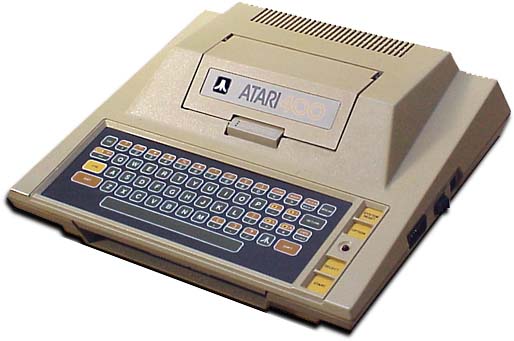

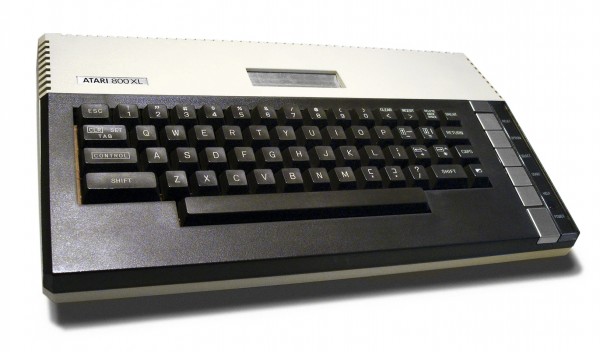

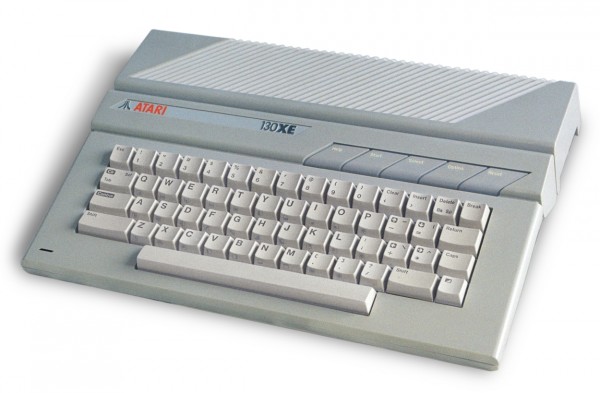
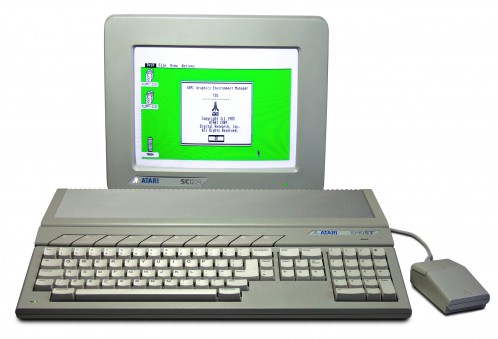

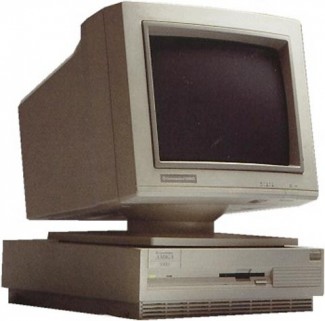
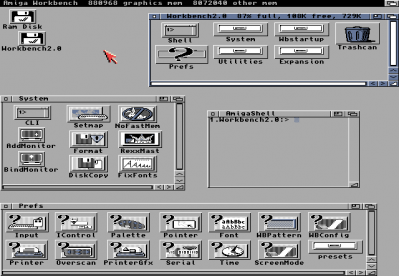
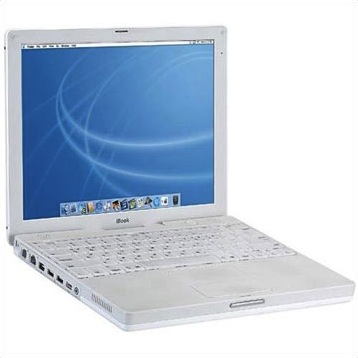
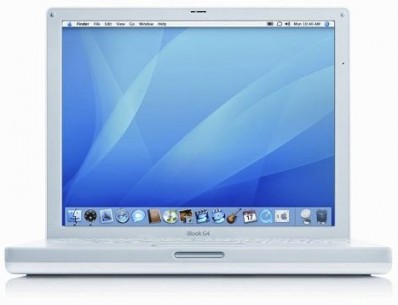
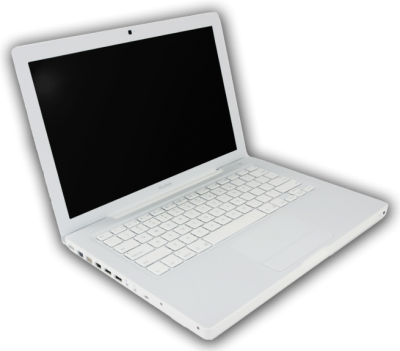
I love how thorough this is! I have had so many clones that sort of evolved like borg cubes, I don’t think I could possibly do this.
I can’t believe you bought an Amiga 500 to take screenshots 🙂
It was fun to write that. I probably should have posted it in 3 instalments because it took so long to write, but I think it gets less interesting as it gets into more familiar Windows/Mac territory. I was getting paid to write an Amiga software manual, hence the need for the 500.
It’s fun to look back at things. I think Gen Y has no idea what it was like to develop for 8 and 16-bit computers. With AmigaDOS 1.x, there was no control library. If you wanted a checkbox, you had to paint one on the screen yourself and figure out how to handle clicks. And to think that now you can write Quake II in HTML 5.: http://gizmodo.com/5507864/yes-this-is-a-game-of-quake-running-in-an-html5-browser
Pingback: Comparison of Atari 400 and MacBook « mike's life in 8 bits
Pingback: More geek notes « mike's life in 8 bits
Pingback: Updated computer addiction « mike's life in 8 bits
Mike,
It’s scary how closely our paths ran! Rather than an Amiga and the 130XE, I inserted (at various places) a Commodore VIC-20, a C-64, and a TRS-80 Model I. I really need to blog about that as you did, and perhaps you’ve given me the prod I needed. Thank you for the trip down memory lane!
All the best,
Mark